Finchley Hedge Cutting Contractors (N2): Undoubtedly one of the chores that we usually dislike is trimming those garden hedges. It's just one of those things that home owners postpone whenever possible and subsequently learn that they are so out of control that cutting them back is beyond us. Constant pruning keeps a hedge thicker and neater and will improve the shape and visual appeal. Its also far simpler to achieve when carried out regularly. Certainly some people aren't fit or able enough for doing this sort of physical labour or do not have the necessary tools to do the job efficiently. If this is the case you will have to bring in some professional help in the form of a local gardener or hedge cutting specialist. So that your hedges are taken care of in the right way it is very important that you employ someone that knows exactly what they're up to.
A skilled hedge cutting contractor will give you advice concerning the most suitable time to trim your prized hedge and the proper way to get it done. Growing a decent hedge can cost a considerable amount of money and you don't want yours to be ruined by being cut improperly or at the wrong time of the year. So if you're giving some thought to calling in Finchley hedge cutting specialists, be sure to get somebody who knows what they are up to.
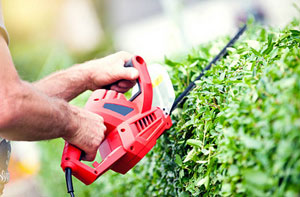
Its possible you might want your hedges trimmed into fancy designs like archways or curves and if so, it's even more vital that you employ a skilled contractor to perform the task. While they are mowing the lawn and pulling up weeds, most traditional gardeners will be more than happy to also look after your hedges, although tall hedges may need the attention of a tree surgeon with the correct safety equipment.
When done properly, trimming a hedge helps to keep it strong and healthy, it both improves the root system and promotes new growth making the hedge denser and able to better fight diseases and attacks by pests. A strong and healthy hedge looks better and serves its proper role in your garden ie form an effective dividing line between yours and your neighbours garden, give you more privacy and provide much needed shelter from windy weather.
A hedge can pretty quickly become top heavy and patchy when it's not appropriately cared for, and can develop ugly gaps and a lack of leaves, particularly at the base. Your hedge will be neater and more compact and will sprout lots of new shoots to bridge those gaping holes if it's frequently clipped.
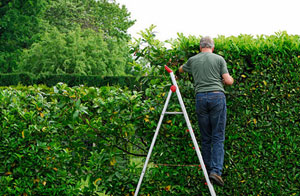
A hedge that is allowed to grow unattended will also spread outwards, filling up more of your garden space and producing a substantial clump of leafless branches inside that will look shocking when you do eventually choose to cut it back. And if you anticipate that your hedge will recover quickly, you'll want to think again, seeing that it is probably going to take a number of years before its looks normal once more.
Factors such as the height of the hedges, the number of hedges that require trimming, what condition the hedges are in, whether you need the hedge waste to be removed and the size of the property, will affect the cost of getting your hedges trimmed in Finchley, thus it is not easy to provide a ballpark price for this sort of work.
It is also worth noting that hiring a professional hedge trimming service in Finchley can actually be a cost-effective solution in the long run. A correctly maintained hedge is less likely to suffer from pests or diseases, which can ultimately save you money on costly treatments or replacements.
Moreover, a well-trimmed hedge can improve the overall appearance of your property, which can increase its value if you plan to sell in the future. The presence of healthy hedges and landscaping that is well-maintained can be an attractive feature for prospective buyers when viewing properties.
Hedges fulfil a pivotal role in the maintenance of biodiversity. As essential habitats and passageways for wildlife, they provide refuge, sources of food, and safe transits across various ecosystems. Birds use the lush leaves for nesting, while the base of the hedge becomes a home for small mammals and insects. A multitude of species dine on the flowers, fruits, and the plethora of insects housed within the hedge. By dissecting the landscape, hedges facilitate the development of various microclimates, creating supplementary habitats for species. They also act as a refuge from predators and severe weather. Consequently, the safeguarding and effective management of our hedges isn't just beneficial but is vital for supporting local wildlife populations.
To summarise, to ensure the aesthetics and health of your hedges, proper maintenance is crucial if they are present on your Finchley property. Engaging a specialist hedge trimming company can lead to benefits such as improved safety, time and energy savings, proper trimming techniques, increased property value, and long-term cost savings.
Hedge clipping services are available in Finchley and also in nearby places like: Colindale, Golders Green, West Finchley, Brent Cross, Woodside Park, East Finchley, Fortis Green, Mill Hill East, Church End, Hendon, Friern Barnet, Muswell Hill, and in these postcodes N3 1SH, N3 1ES, N3 1ED, N3 1TT, N3 1DE, N3 1JE, N3 1RJ, N3 1QF, N3 1BG, and N3 1BS. Locally based Finchley hedge cutting specialists will likely have the telephone code 020 and the postcode N2. Checking this can ensure you access local providers of hedge trimming. Finchley householders are able to benefit from these and various other related services. By clicking on the "Quote" banner you can get hedge cutting price quotes from providers nearby.
Types of Hedge
Hedges can be created from an array of different tree and shrub types and in some instances hedges consist of several species in which case they're known as "mixed hedges". Even more plant varieties could be included in the equation if you were to pitch hedgerows into the mix. Hedges can be deciduous, evergreen or coniferous and each of these groups has several species which are regularly used in hedges. On the whole leylandii, box, hornbeam, English yew, western red cedar, beech, cherry laurel and privet are the most commonplace varieties that are used for hedges in gardens. When considering hedgerows you can also add crab apple, field maple, oak, dog rose, rowan, hawthorn, hazel and lot's more.
When is the Best Time to Cut Back a Hedge in Finchley?
This is often asked by householders in Finchley and may depend on the type and age of the hedge that you have. In relation to newly planted hedges, they ought to be cut during the winter time or early spring until they're two or three years old. In order to keep their shape and density, well established hedges must be chopped back 2 or 3 times a year. Maintenance hedge trimming is typically undertaken between spring and summer (May to September). To find out the different treatments which are needed for specific varieties of hedge, you can head over to the RHS (Royal Horticultural Society) webpage or ask an expert hedge specialist. Pruning might need to be deferred to avoid disturbing nesting birds, even though there are best times for trimming certain hedge varieties.
Privet Hedges Finchley
Privet hedges, recognised by their orderly lines and full foliage, are prevalently seen in Finchley gardens. Underappreciated often, these humble shrubs present a range of benefits, which makes them a popular choice for both property owners and landscapers. Here we unveil just a handful of the many benefits associated with privet hedges:
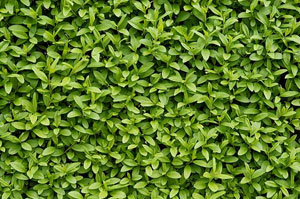
- Low Maintenance: One of the biggest attractions of privet hedges is their low maintenance needs. They tolerate a number of different soil conditions and require minimal pruning to keep their shape and form.
- Screening and Privacy: The visual barrier that's created by the thick foliage of a well-maintained privet hedge provides privacy from neighbours and passers-by. Unsightly parts of your garden can also be effectively screened.
- Fast-Growing: In the quest for a quick privacy solution, these hedges stand out as a leading choice. Their accelerated growth pace facilitates the formation of an extensive barrier within a short length of time.
- Habitat for Wildlife: Privet hedges, although not really wildlife hotspots, can offer nesting areas for wild birds and a useful food source through their black berries. However, it's crucial to note that these berries are slightly toxic to humans and should never be eaten.
- Noise Dampening: The dense foliage acts as a natural sound barrier, particularly beneficial for gardens located near noisy areas or busy roads in Finchley.
- Economical Solution: When compared with alternative screening methods such as fencing, privet hedges present an economical choice. They necessitate fewer materials and less constant upkeep, making them a budget-wise solution.
- Pollution Tolerance: Well-suited for use in urban gardens, privet hedges are extremely tolerant of pollution in the air.
- Informal or Formal Styles: Depending on the pruning strategy and variety, privet hedges can be trimmed into both traditional, geometric shapes or a more relaxed, informal style.
Planting and Caring for Your Privet Hedge
Even gardening novices can enjoy a privet hedge. Planting and maintaining them is a simple matter:
- Pruning: Don't forget to trim your hedge regularly! This will ensure it stays the shape and size you want. Late spring or early summertime is the prime time for pruning.
- Picking the Right Location: Locate an area in your garden with good drainage, offering either full sun exposure or partial shading.
- Watering: Establishing the root system is vital, so water your privet hedge on a regular basis, particularly in the first year after planting. Once mature, these hedges are fairly tolerant of dry conditions.
- Spacing: Dense hedges require close planting. Aim for a spacing of 16-24in (40-60cm) between individual shrubs, considering their full-grown width.
- Planting Time: For a successful privet hedge, try to plant in spring or autumn. In these seasons, the soil offers perfect moisture levels, avoiding waterlogging.
- Feeding: Administering a balanced fertiliser in the spring months has the potential to encourage thriving development, even if this is not strictly compulsory.
The modest privet hedge brings a plethora of advantages to Finchley gardens, offering screening, privacy and noise reduction, all while requiring little upkeep.
Shrub Pruning
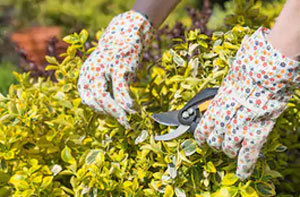
Pruning your shrubs is an essential task to maintain their health and keep them looking good. Regrettably it is easy to damage shrubs and plants by pruning incorrectly, therefore it is best to use a competent gardener when pruning time rolls around in Finchley.
A good gardener in Finchley will identify any dead or damaged sections of your shrubs and expertly prune them back to help rejuvenate them. They'll also put right any issues with the shape of your shrub such as lopsidedness or if it is becoming top-heavy.
Pruning is crucial for allowing any fruit or berries to develop to their maximum potential, and also for the overall health and wellbeing of your trees, shrubs and bushes.
Hedge Watering and Irrigation Finchley
Hedge watering and irrigation are essential for keeping your hedges healthy and vibrant. To prevent wilting and maintain healthy growth, hedges require regular moisture, especially during hot or dry conditions. Without sufficient watering, stress can set in, leading to stunted growth or potentially killing the plant.
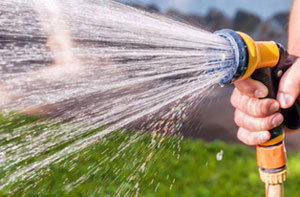
Instead of watering the leaves, focus on the roots when watering hedges in Finchley. Ensuring the water reaches the roots, it is best to water directly at the base of the hedge. Using a watering can, hose, or drip irrigation system ensures efficient water delivery without any waste.
Irrigation systems provide a great solution for those with large hedges or hectic lifestyles. Providing a slow and consistent water supply directly to the roots, a drip irrigation system is especially efficient. Preventing overwatering, which can lead to root rot or disease, is aided by reduced water evaporation.
Ensuring your hedges get the right amount of water requires regular monitoring of soil moisture. If you find the soil is dry to the touch a few inches down, it's time to give it water. Hedges may need to be watered more often during warmer months, but during cooler seasons, reducing watering can avoid waterlogging.....READ MORE (Hedge Watering and Irrigation Finchley)
Tree Surgery Finchley
The practice of tree surgery focuses on the health, safety, and condition of trees and high hedges. The work entails a multitude of activities, such as pruning branches, disease treatments and removing deadwood. Known as arborists, tree surgeons can evaluate a tree's condition and take the necessary measures to maintain its health and wellbeing. The result of this is that trees in Finchley remain strong and beautiful, positively impacting both the landscape and the surrounding environment.
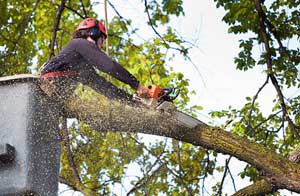
Through their use of professional techniques and tools, tree surgeons in Finchley are effective in the management of trees and hedges. Safely climbing even the tallest of trees, they can trim or remove branches that threaten people below or property nearby. In addition to this, they handle the felling of tree, which must be thoroughly planned to minimise damage. By removing dangerous deadwood and limbs, they also ward off potential accidents, especially during storms or strong winds.
These professionals are skilled in managing tall and out-of-reach hedges as well as taking care of trees. Overgrown hedges can become unmanageable, blocking sunlight or paths. To maintain healthy and neat hedges, a tree surgeon can cut them back to the correct height. This action improves the overall health of the plants and enhances the aesthetic appeal of your garden in Finchley. Making sure that your garden functions effectively and looks well-kept, timely hedge management by a tree surgeon is crucial. (Tree Surgeons Finchley)
Box Hedging Finchley
Not everybody in Finchley wants or needs a 2 metre high hedge, and for anybody who is looking for borders, edgings or small boundaries, box could be the perfect choice for you. When trimmed on a regular basis, box will form a bushy and neat hedge which should attain a height of 1 metre over a period of around 10 years when starting with 15-20 cm plants. Box (Buxus sempervirens) hedging plants can be obtained online or from garden centres, and are perfectly suitable both large formal gardens and small domestic gardens. You might be fascinated to know that a box hedge could easily survive and thrive for 500 years or even more, and you can see many examples of hedges this old in historic gardens and stately homes around Great Britain.
When planted in good conditions, box plants, once established, will grow by about 6 inches (15cm) per year, although this growth rate might be considerably lower when grown in poor quality soil or in a shady area. In spite of this, there are relatively few situations that box hedge plants will not flourish in, and they are able to tolerate acid or alkaline soils, and are happy in either sand or clay. One setting where box hedges will have a problem thriving is in waterlogged or boggy ground, so don't try to grow them them in these conditions.
You can even get "instant box hedging" from certain suppliers in the UK, if you don't have the patience to wait years and years for a box hedge to grow by the normal means. Hedging like this may be offered as a row of plants raised in one metre troughs, and pruned into the shape of a hedge, which can be positioned end to end to form any length of box hedge you require, or as individual plants approximately twenty five to thirty centimetres high, which are already clipped into a rectangular shape and when planted in a row form an "instant hedge" for your garden. The results from these is immediate, and years of hard work can be avoided. As their growth continues in the years ahead, you will of course have to keep them tidily pruned.
Do You Cut Top or Side of Hedge First?
In the act of trimming a hedge, the sides are best dealt with first, and then one should proceed to the top.
- Sides: Initiate the trimming process from the bottom of the hedge, moving upwards to produce a slight "batter" or sloping effect on either side. The assurance that the base is wider than the top enables sunlight to touch the lower branches, keeping the entire hedge dense and vigorous.
- Top: Upon finishing with the sides of the hedge, you can then turn your attention to the top. When it comes to tall hedges, this is usually the toughest part. By using a solid step ladder, make an effort to make sure the cuts are uniform for a flat, level top.
If you find your hedge significantly overgrown, trimming over several seasons might be necessary, particularly when more than a third of the hedge's total volume needs to be removed. This approach can help avoid stressing your plants too much at once. Always remember to clean up after trimming to prevent the spread of disease and keep your garden looking neat and tidy.
Bird's Nests in Hedges
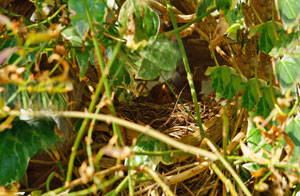
One important detail you'll need to be aware of whenever you are trimming your hedges in Finchley is legislation concerning nesting birds. Through the nesting bird breeding season, which is between the months of March and August, the RSPB (Royal Society for the Protection of Birds) advises that the clipping back of trees and hedges should not be done. This is just the months when many people will be aiming to cut back their hedges.
It has been an offence "to intentionally take, damage or destroy the nest of any wild bird while it is in use or being built", ever since the introduction of the 1981 Wildlife and Countryside Act. Consequently, to help to conserve our prized wildlife, please be sure to check that your hedges don't have and bird's nests before trimming them back. Upon finding a nest that's active, it's better to delay hedge trimming until the chicks have fledged and the nest is no longer occupied.
Is it Okay to Cut My Neighbour's Hedge?
This is an interesting question regarding hedges in Finchley, and obviously, in the most part, it will be dependent on whether you get on with your neighbours. Certain neighbours are incredibly obliging when it comes to hedges and will be pleased to trim your side of the hedge while they're clipping their own. Other next door neighbours might just leave you to trim your own half of the hedge, and won't be as considerate. When push comes to shove you are legally entitled to cut any branches or roots of a hedge that grow onto your garden from a neighbour's property or from a public road, and are creating an issue. You can however only chop them back to the property boundary, if you cut more you might be taken to court for damaging their property. Do note that hedge trimmings technically speaking belong to your neighbour and should really be offered back to them, even if they may not want them.
Hedge Transplanting and Relocation Finchley
A horticultural practice known as hedge transplanting and relocation involves shifting established hedges from one place to another, a process frequently carried out for diverse purposes like property development, landscape redesign, or revitalising an aging hedge.

Precise planning and execution are critical for the success of hedge transplanting. This procedure usually consists of uprooting the entire hedge, including its root system, and then planting it anew in the desired spot. The operation's effectiveness is reliant on variables like the season for transplanting, the hedge's dimensions and type, and the condition of the root system.
The survival of transplanted hedges relies on diligent care and attention post-relocation. During the establishment phase in the new location, vital tasks such as adequate watering, maintenance and pruning become paramount. While it may require time for the hedge to fully assimilate into its fresh surroundings, with proper care, it can thrive and continue to provide privacy, beauty, and functional advantages in the new environment. Hedge transplanting proves to be an economical and sustainable approach to conserving and relocating greenery while accomplishing desired landscaping goals. (71171 - Hedge Relocation Finchley).
Hedge Cutting Near Finchley
Also find: Fortis Green hedge cutting, Muswell Hill hedge cutting, East Finchley hedge cutting, Hendon hedge cutting, Golders Green hedge cutting, Colindale hedge cutting, West Finchley hedge cutting, Church End hedge cutting, Brent Cross hedge cutting, Mill Hill East hedge cutting, Woodside Park hedge cutting, Friern Barnet hedge cutting and more. Pretty much all of these places are catered for by hedge cutting specialists and gardeners. Local residents and business owners can get hedge cutting price quotes by going here. Does a hedge on your property look untidy and overgrown? Get a hedge trimming quote today - and don't delay!
More Finchley Services and Trades: While you may be in search of a professional who specialises in hedge cutting in Finchley, you could additionally find patio installation in Finchley, garden digging services in Finchley, SKIP HIRE in Finchley, garden wall construction in Finchley, block paving in Finchley, fence builders in Finchley, carpenters in Finchley, artifical grass in Finchley, landscape gardeners in Finchley, garden shed installers in Finchley, tree surgeons in Finchley, garden decking in Finchley, a bricklayer in Finchley, and other tradespeople.
Hedge Cutting Tasks Finchley

Finchley hedge cutting contractors can usually help with boundary hedge cutting, contract hedge cutting, regular hedge maintenance, evergreen hedge planting, roadside hedge cutting, hedge weed control & mulching, hedge pest control, tree shaping, conifer hedge trimming in Finchley, fancy hedge trimming, yew hedge clipping, yew hedge cutting and pruning, box hedge cutting, wisteria pruning, overgrown hedge restoration, flail hedge cutting in Finchley, tree and hedge pruning, ivy removal, hedge relocation & transplanting, hedge fertilisation & nutrient management, hedge thinning & crown reduction in Finchley, lilac hedge pruning, hedge makeovers, hedge planning and design in Finchley, garden hedge trimming, commercial hedge maintenance in Finchley, hedge tidying, instant hedging, home hedge cutting, the maintenance of hedges and other hedge related tasks in Finchley.
These are just some of the activities that are undertaken by those specialising in hedge cutting. Finchley specialists will keep you informed about their full range of hedge trimming services.More: Hedge Lopping, Hedge Reduction, Cut Hedges, Hedge Cutting, Cheap Hedge Trimming, Hedge Pruning, Hedge Maintenance, Hedge Cutting, Hedge Pruning, Hedge Trimming Services, Hedge Upkeep, Hedge Cutting, Cheap Hedge Cutting, Hedge Cutting Services, Hedge Shaping, Hedge Removal, Hedge Trimming Services, Hedge Clipping, Cheap Hedge Trimming, Hedge Care Experts, Hedge Height Reduction, Hedge Clipping, Hedge Maintenance, Hedge Pruning, Hedge Trimming Services, Hedge Trimming Services, Hedge Pruning, Hedge Clipping, Hedge Cutting, Hedge Care Experts, Tree Surgeon, Tree Pruning, Cheap Tree Surgery, Crown Lifting, Hedge Planting, Hedge Cutting Services, Hedge Cutting, Garden Hedge Cutting, Hedge Specialists.
Hedge Trimming Finchley - Hedge Removal Finchley - Hedge Cutting Contractors Finchley - Hedge Maintenance Finchley - Hedge Trimming Near Me - Hedge Cutting Services Finchley - Hedge Clipping Finchley - Hedge Cutting Near Me - Conifer Trimming Finchley


